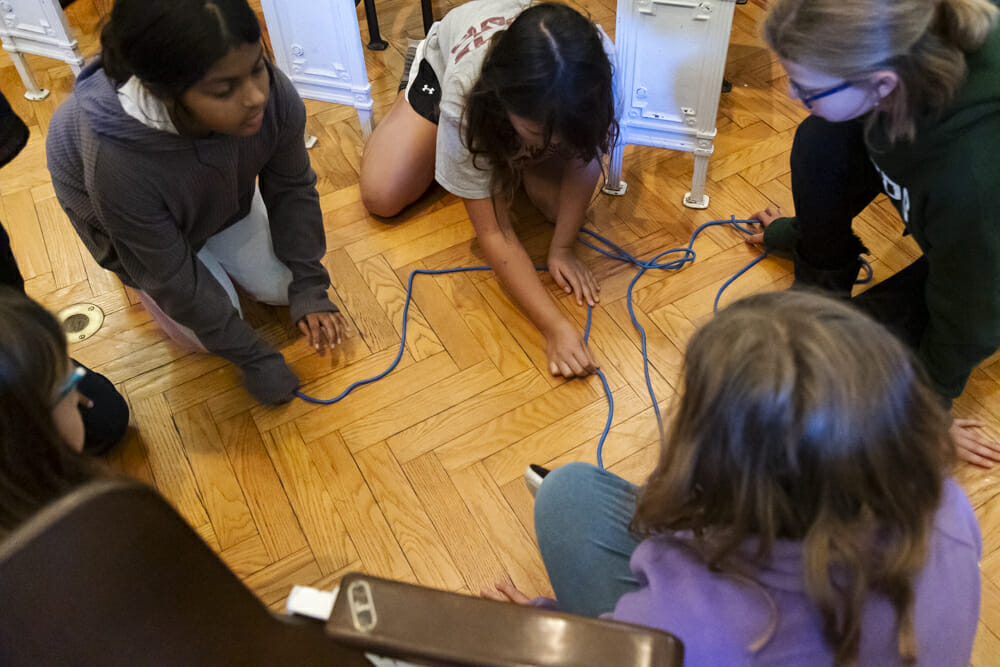Each year in fifth-grade Spanish, Middle School World Languages Teacher Christine Mayer introduces students to the life cycle and journey of the monarch butterfly. Why the monarch? “When one particular generation of monarchs in St. Louis makes their flight south in the fall, they head to Mexico to spend their winter there,” said Mayer. “Their arrival in one particular region in Mexico coincides with the start of the Day of the Dead celebrations in that region. The people in that area in Mexico describe the monarchs as representatives of the souls of the loved ones they have lost. We take this opportunity to teach students about the connection we have with Mexico and to learn more about the cultural significance of the Day of the Dead.”
The World Languages department took it a step further this year and partnered with JK-12 Science Department Chair Paul Zahller to share the vital role of language in animal conservation efforts. “For conservation efforts to succeed, a lot of people have to collaborate across different countries, cultures, and languages,” said Zahller. He engaged the students in a fun exercise to help students understand their own human migratory patterns in Missouri. He also shared a few websites that detail animal migration patterns, both historical and current.
“I really loved watching the documentary about where the monarchs go and why they go there,” said Elika Coff ’30. “I learned that someone figured out how to stick tags to the butterfly wings so they could track them. Many animals have these migration locations built into their DNA, so they know where to go. It’s so simple for a young animal to learn. The mapping exercise helped us learn how butterflies move around but also how we move around. I’ve been here since JK, but this year feels extra special because we got to raise the butterflies. When we watched the documentary together, we even found a small caterpillar in our classroom, and it was a monarch!”
Ajaya Spann ’30 enjoyed raising a butterfly in class, watching it grow, and releasing it. “When the scientists went to where the butterflies migrated to, they found the ones they were tagged,” she said. “With the map project, I liked learning how little creatures can move so far and make such a big difference in our world. The Missouri map shows how we all go to different places, and some of us have places we visit once a year or more. It was cool to connect language and science, and the butterflies are amazing!”
The monarchs raised in the fifth-grade Spanish class were eventually released to follow their DNA-fueled migration pattern, similar to the releases in the Lower School Monarch Waystation. Happy travels to our MICDS-raised monarchs!
To learn more about monarchs and migration patterns, visit Journey North and the Nature Conservancy websites.

















